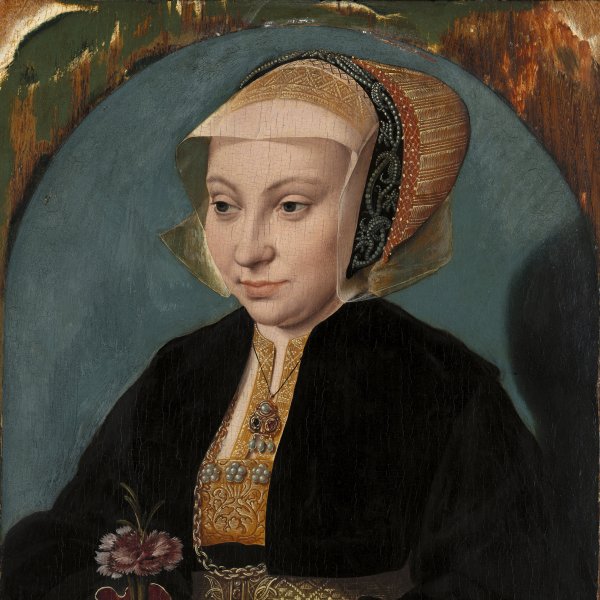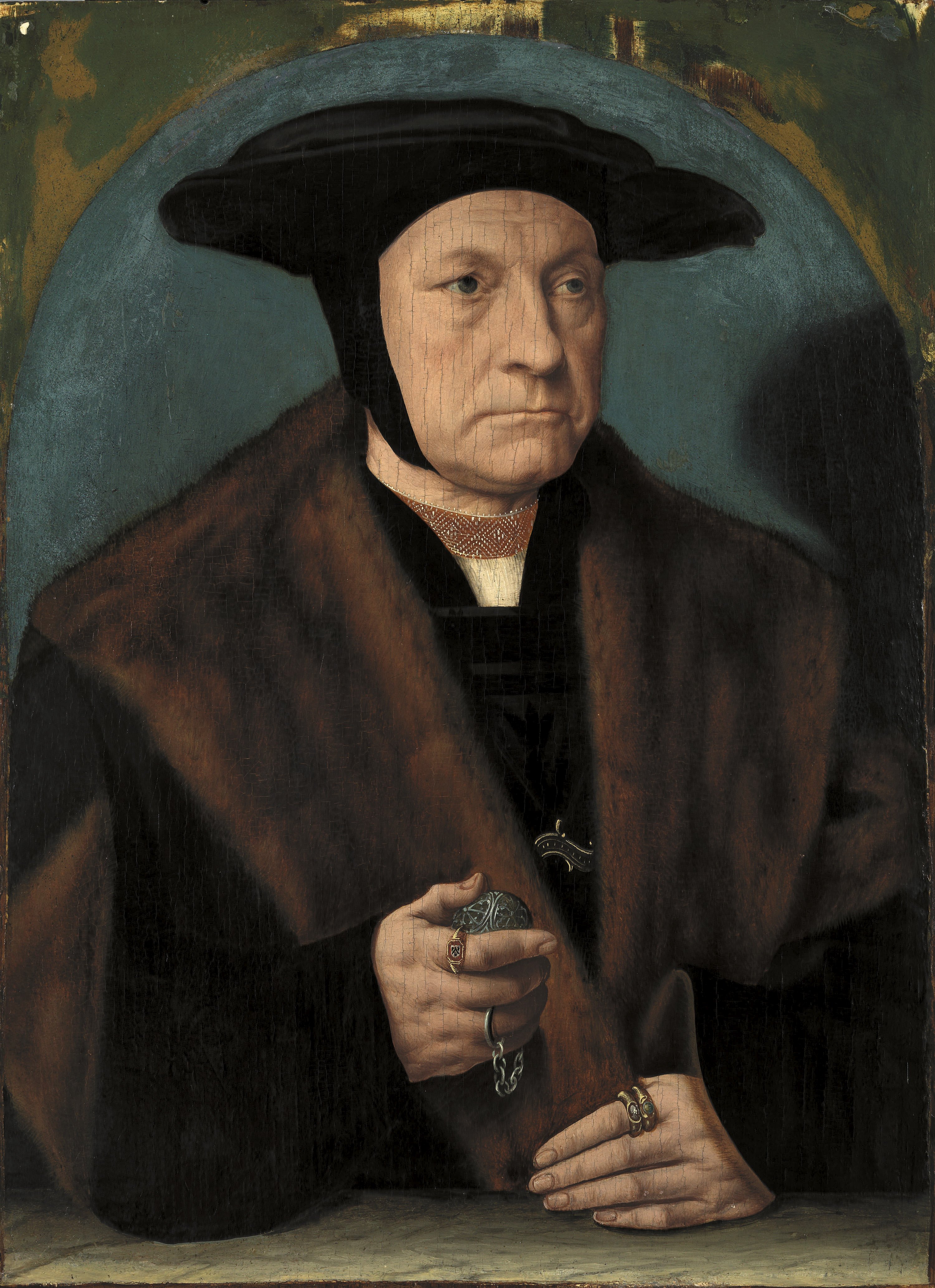Portrait of a Man from the Weinsberg Family
Bruyn lived and worked in Cologne. His work reveals a knowledge of Netherlandish art. Bruyn primarily focused on religious painting but was also highly successful as a portraitist, a genre in which his approach comes closer to that of contemporaries such as Joos van Cleve or Maerten van Heemskerck, particularly with regard to the use of realism.
Forming a pair, these two panels of almost identical size depict two half-length figures that turn towards each other slightly. They share the same blue background with a marble ledge and lighting that enters from the left. All these characteristics have led to the suggestion that the two sitters are a man and wife, while the coat-of-arms on the man’s ring, bearing a black trefoil, identifies him as a member of the Weinsberg family. Bruyn’s virtuoso technique is still more evident in the figure of the woman, particularly in the details of the jewels and accessories and in the magnificent foreshortening of the hand that holds the pinks. The woman is also more strongly lit and is defined through more pronounced contrasts of light and shade. The man, who has been inconclusively identified as various members of the house of Weinsberg, is depicted using a more muted light but is powerfully characterised and has a notably realistic face.
MGA
These two panels depict a couple, using the traditional format in which the man is on the left and the woman on the right. The two panels are almost identical in size, with arched tops, identical blue backgrounds and the light falling from the left, projecting heavy shadows on the right. They also share a marble ledge in front of them, which terminates in the right-hand panel. The two oils were in the Rohoncz collection in 1930 and were exhibited at the Neue Pinakothek in Munich. Prior to that they were in a private collection in St Petersburg and in the Mandl collection in Wiesbaden. Bruyn depicted all the elements with precise detail, achieving rich, soft nuances in the woman’s face, characterised by a slight smile. In the male portrait the attention focuses on the face and hands, which stand out against the hat and the dark clothing respectively. In his left hand he holds a delicately pierced pomander and has a ring with a coat-of-arms on his index finger. This bears three black leaves of clover and has been identified as the coat-of-arms of the Weinsberg family in Cologne. The figure of the wife contrasts with the austerity of her husband due to the quantity and value of the jewellery that adorns her dress. Bruyn was equally careful in his depiction of the hands, one of them holding a pink, as he was in the ornate decoration of the belt, the stomacher and the headdress. Attempts to identify the male sitter with various specific members of the Weinsberg family have so far proved unsuccessful.
Mar Borobia






